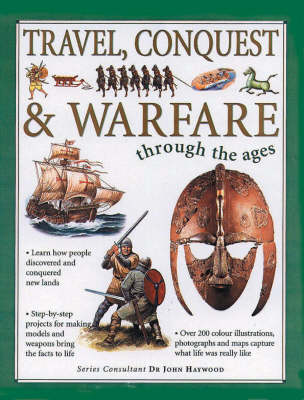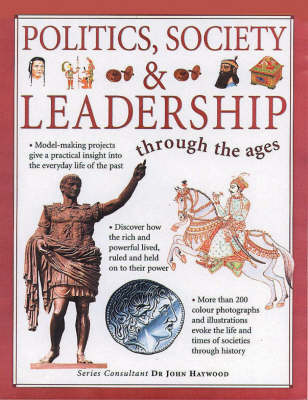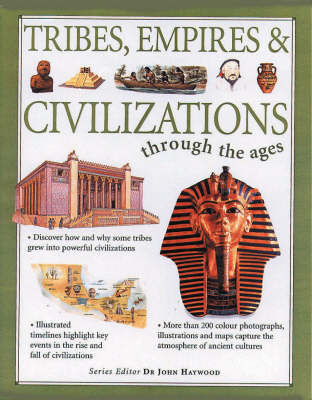Through the Ages
4 total works
Travel, War & Exploration Through the Ages
by Daud Ali, Dr Jen Green, Charlotte Hurdman, and Et Al
Published 31 October 2001
Methods of transport and the need to conquer new territory have led to the spread of ideas, cultures and civilization throughout history. This thematic history book traces the parallel developments of transport, and empire building and the tools of war, in one volume. See how the development of transport on land and sea developed through the ages, and see how it varied from country to country according to local needs and terrain. Trace the pattern of war and conquest through history, and compare the favoured weapons and fighting methods of different civilizations and cultures. All the world's major early civilizations and cultures are represented, from the Stone Age and the ancient river valley civilizations of Mesopotamia, the Indus Valley and the Nile, to the continuing cultures of the Arctic and Native America. The book contains colour illustrations, including historical photographs, inside-view artworks and life-like paintings. Step-by-step projects for costumes, and model-making are all inspired by the skills of the past and pictorial timelines trace key events and inventions.
The text aims to enhance British National Curriculum Key Stage 2 objectives by encouraging understanding of tribes and civilizations in cotext of time, highlighting characteristic features of different societies around the world, and introducing new ways of looking at history.
The text aims to enhance British National Curriculum Key Stage 2 objectives by encouraging understanding of tribes and civilizations in cotext of time, highlighting characteristic features of different societies around the world, and introducing new ways of looking at history.
Science and Technology
by Daud Ali, Dr Jen Green, Charlotte Hurdman, and Et Al
Published 31 October 2001
This thematic history traces breakthrough ideas and developments around the world and through time. In this book you will discover taht the nacient Mesopotamians cracked aqueduct building long before the ROmans, that the Chinese invented printing, silk, umbrellas, locks and keys, and porcelain long before the Western world. Spanning every key culture and early civilizations, the book explains which peoples were experts at what, and what spurred them to make the technological breakthroughs that shaped the way we live. It includes step-by-step projects for costumes and model-making.
This visual, thematic history introduces the reader to how societies have been led, controlled and organized through the ages. It travels back through time and around the world to visit each key culture and civilization in turn to investigate all sorts of leadership styles, from the pharaohs of Egypt to the shoguns of Japan. Find out about the few who held power, how they held on to it, and their relationships with the mass of ordinary people. There are insights into how the rich and powerful lived and dressed, and lots of background facts about key moments in political history, such as when the Greeks introduced the first power for the people. A pictorial timeline feature sets all the leaders and governments in historical place. Step-by-step projects show you how to make some of the trappings of power and kingship, including an Inca emperor's fan, a Greek voting token, and a Samurai helmet.
Tribes, Empires and Civilisations Through the Ages
by Daud Ali, Dr Jen Green, Charlotte Hurdman, and Et Al
Published 31 October 2001
This title focuses on how human society and lifestyle evolved, from the time of the earliest humans. The book enables the reader to compare how peoples from opposite ends of the globe gew into great civilizations - or did not - and discover why. Each of the world's major early civilizations and cultures is investigated in turn, from the dramatic changes during the Stone Age and the ancient river valley civilizations of Mesopotamia, the Indus Valley and the Nile, to the continuing cultures of the Arctic and Native American Indians. The book contains colour illustrations, including historical photographs, inside-view artworks and life-like paintings. Step-by-step projects for costumes, and model-making are all inspired by the skills of the past and pictorial timelines trace key events and inventions. The text aims to enhance British National Curriculum Key Stage 2 objectives by encouraging understanding of tribes and civilizations in cotext of time, highlighting characteristic features of different societies around the world, and introducing new ways of looking at history.



